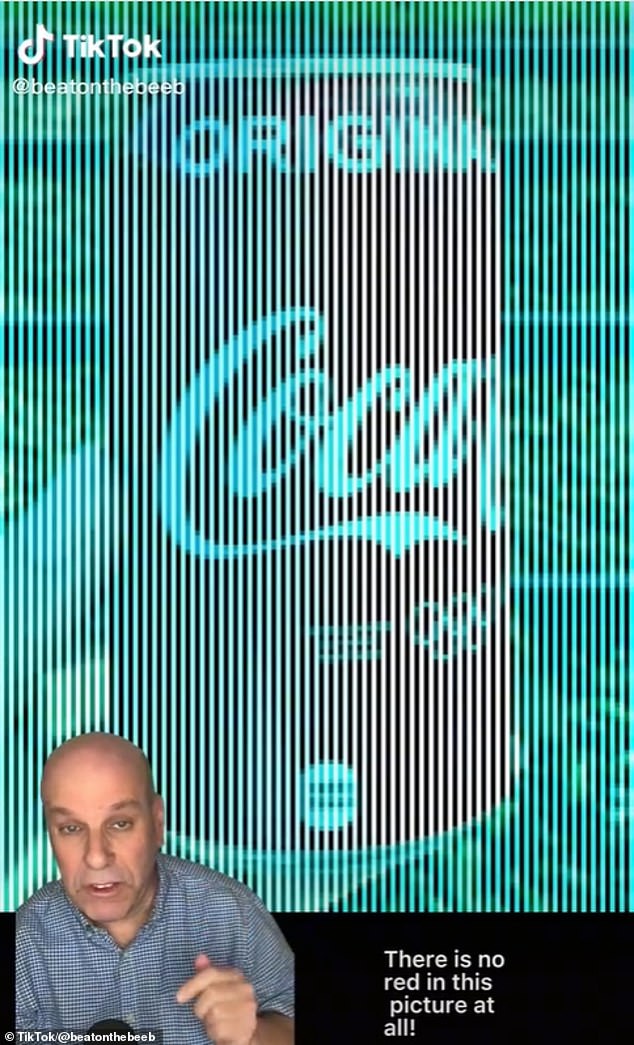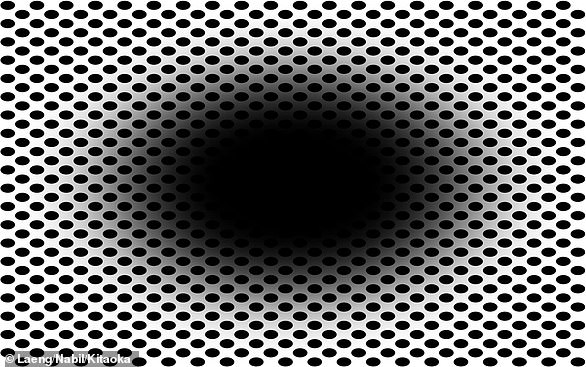What colour do YOU see? This woman’s eyes aren’t actually blue
>
What color do you see? This woman’s eyes aren’t actually blue – how mind-boggling optical illusion fools your BRAIN
- A photo of a woman has gone viral on TikTok because all is not as it seems
- The eyes appear blue, but when you zoom in they are gray
- Because our brain expects someone’s irises to be blue, they appear as such
What color would you say this woman’s eyes are? Your brain will probably tell you they are blue.
But it’s fallen victim to a baffling optical illusion, as it turns out the model’s irises are actually grey.
This becomes more apparent when the red filter is removed from the image and a gray bar is placed directly next to the eyes.
The trick was shared TikTok by serial illusionist Dean Jackson, or @beatonthebeeb, explaining how it works.
“Your brain detects the pigment — the gray area around the pupil — and assumes the red filter has captured the blue light,” he said.
What color would you say this woman’s eyes are? Your brain will probably tell you they are blue. But it has fallen victim to an optical illusion, as the model’s irises are actually gray
“So it’s trying to help you, as your brain is supposed to, by putting the blue color back in front of you, and your brain is completely misleading you in doing so.”
At the back of the human eye are photoreceptors – cells that respond to the incoming light.
These come in two types, ‘rods’ or ‘cones’, and while rods are sensitive to motion and night vision, the cones are capable of detecting colour.
Humans have three types of cone cells, and each is most sensitive to a particular color, red, green or blue.
A red filter only lets red light through, so all other colors should appear as gray or black, including green and blue.
The original image of the woman is in black and white and only when the red filter is placed over it does the eye color appear blue.
However, if our brain recognizes the context of the image and thinks it should appear blue, it can interpret the gray light as such.
Only about three percent of the world’s population has gray eyes, while between eight and ten percent have blue eyes.
Therefore, when we zoom in on the image and it no longer looks like an eye, the irises appear to be as gray as they really are.


if our brain recognizes the context of the image and thinks it should appear blue, it can interpret the gray light as such. This means that when we zoom in and it no longer looks like an eye, the irises appear as gray as they really are

“Your brain detects the pigment — the gray area around the pupil — and assumes the red filter has captured the blue light,” Jackson said.

The original image of the woman is in black and white and only when the red filter is placed over it does the eye color appear blue
Mr Jackson presented another example of this in an earlier video where he showed an image of a gray Coke can covered in stripes from a cyan filter.
The stripes with the filter appear red for the same reason as above – because your eye expects it to be red, despite the cyan filter blocking all red light.
However, the gray stripes without a filter also look red due to the principle of ‘color constancy’.
This is the phenomenon that allows our eyes and brain to perceive that something has the same color under different lighting conditions.
However, this ability can be tricked and can cause a color to look different than it really is when placed next to another color.
In this case, a cyan stripe next to a gray stripe can make the gray appear red.

The stripes with the filter appear red for the same reason as above, but the gray stripes without the filter do so because of the principle of ‘color constancy’

